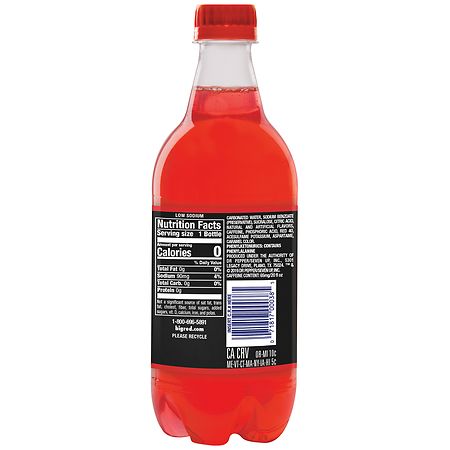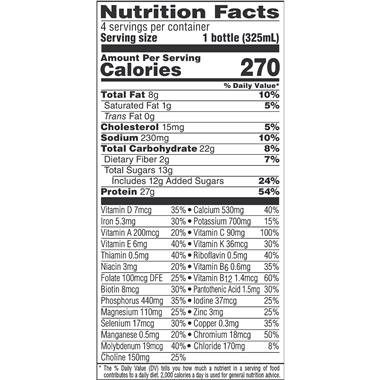44 nutrition labels list the energy content of food in
How to calculate the Energy available from foods To calculate the energy available from a food, multiply the number of grams of carbohydrate, protein, and fat by 4,4, and 9, respectively. Then add the results together. For example, 1 slice of bread with a tablespoon of peanut butter on it contains 16 grams carbohydrate, 7 grams protein, and 9 grams fat : 16g carbohydrate x 4 kcal/g = 64 kca l How Do You Know Your Food's Nutrition Facts Label Is ... As you may have noticed, most of your favorite food items have recently updated their nutrition facts labels. It's the first major update to the labels in more than 20 years. The Food and Drug Administration (FDA) announced the new label format in May of 2016, and starting this year, food and beverage manufacturers must use it on all of their ...
PDF NUTRITION LABELLING INFORMATION - Food Standards Agency the nutrition declaration, e.g. 'This product contains no added salt. Salt content is due to naturally occurring sodium.' Minimum requirements * For a list of foodstuffs which do not require nutrition declarations, please refer to Annex V of the Food Information to Consumers Regulation (EU) No. 1169/2011 Typical Values Per 100g/ml Energy kJ ...

Nutrition labels list the energy content of food in
Codex Guidelines on Nutrition Labelling 2.3 Nutrition declaration means a standardized statement or listing of the nutrient content of a food. 2.4 Nutrition claim means any representation which states, suggests or implies that a food has particular nutritional properties including but not limited to the energy value and to the content of protein, fat and carbohydrates, as well as the ... Food Labels | CDC If you eat the whole thing, you are eating 8 times the amount of calories, carbs, fat, etc., shown on the label. Total Carbohydrate shows you types of carbs in the food, including sugar and fiber. Choose foods with more fiber, vitamins, and minerals. Choose foods with lower calories, saturated fat, sodium, and added sugars. Avoid trans fat. Nutrition labels: Finding out about the food you eat All information on the nutrition label is based on a specific amount of food called the serving size. When you compare products, ensure that the serving sizes are the same. When comparing foods, use percent daily values (% DV) to find out if a food has a little or a lot of a nutrient. Choose foods with lower amounts of total fat, saturated fat ...
Nutrition labels list the energy content of food in. Food labels: a guide to reading nutrition labels - MyDr.com.au A food making a 'diet' claim must meet some criteria regarding the content of nutrients of public health significance (saturated fat, sugars and sodium) and must either have no more than 80 kJ/100 mL (for liquid foods) or 160 kJ/100 g (for solid foods) or must have at least 40% fewer kilojoules than the same quantity of a reference food. Nutritional Values For Common Foods And Products Highest caloric density foods Top Foods by Vitamin Vitamin A Thiamin Riboflavin Niacin Pantothenic acid Vitamin B6 Vitamin B12 Folate Vitamin C Vitamin D Vitamin E Vitamin K1 Betaine Choline Top Foods by Mineral Calcium, Ca Copper, Cu Fluoride, F Iron, Fe Magnesium, Mg Manganese, Mn Phosphorus, P Potassium, K Selenium, Se Sodium, Na Zinc, Zn The energy content of food - Diet - GCSE Biology (Single ... When 0.5 g of food is burned, 10 cm3 of water warms up by 20°C. What is the energy content of the food in J/g? Reveal answer. up. down. 1 cm 3 of water has a mass of 1 g. energy transferred to ... Nutrition information panels - Food Standards Protein, fat, carbohydrate, dietary fibre and alcohol all provide energy (kilojoules). Protein Protein is essential for good health and is particularly important for children. Generally, people in developed countries eat enough protein to meet their requirements. Meat, poultry, fish, eggs, milk and cheese are animal sources of protein.
Food labels & nutritional information | Raising Children ... All foods have to list seven food components on their nutritional information panels - energy (kilojoules), protein, total fat, saturated fat, total carbohydrates, sugars and sodium. Manufacturers might decide to include other nutrients too, including fibre and calcium. Nutrition Labels Flashcards | Quizlet Nutrition Label Required on most packaged food in many countries Calories The amount of energy a food has. Total Fat The total amount of Saturated, unsaturated, and trans in each serving. Serving Size The amount you should eat for one serving. Servings per container The amount of servings in the food item. Percent of Daily Value How to understand food labels - Eat For Health The Nutrition Information Panel on a food label offers the simplest and easiest way to choose foods with less saturated fat, salt (sodium), added sugars and kilojoules, and more fibre. It can also be used to decide how large one serve of a food group choice or discretionary food would be and whether it's worth the kilojoules. Nutrition labelling | Food Standards Agency The repeated information may be provided in the following formats: per 100g/ml only per 100g/ml and per portion on a per portion basis only Energy must always be indicated per 100g/ml as a minimum....
Learn How the Nutrition Facts Label Can Help You Improve ... The Nutrition Facts label external icon on packaged foods is based on updated science and dietary recommendations external icon for Americans. Using the label can help you choose foods for a healthy diet. The label is required on all packaged foods made in the United States and imported from other countries. How to Understand and Use the Nutrition Facts Label | FDA Dietary fiber, vitamin D, calcium, iron ad potassium are nutrients on the label that Americans generally do not get the recommended amount of. They are identified as nutrients to get more of.... Nutrition facts label - Wikipedia In 2011 the Chinese Ministry of Health released the National Food Safety Standard for Nutrition Labeling of Prepackaged Foods (GB 28050-2011). The core nutrients that must be on a label are: protein, fat, carbohydrate and sodium. Energy is noted in kJ. And all values must be per 100g/100ml. An example of a Chinese nutrition facts label Food labels - NHS
Calories on the New Nutrition Facts Label | FDA One package of food may contain more than one serving, so, if you eat two servings you would be getting two times the calories shown on the label. For example, if you ate one serving of the food...
Food Labels | Nutrition.gov The U.S. Food and Drug Administration (FDA) has updated the Nutrition Facts label on packaged foods and beverages with a fresh design that will make it easier for you to make informed food choices that contribute to lifelong healthy eating habits.
Nutrient food labels Flashcards - Quizlet Start studying Nutrient food labels. Learn vocabulary, terms, and more with flashcards, games, and other study tools.
Printable Materials and Handouts | Nutrition.gov FDA's Center for Food Safety and Applied Nutrition developed "Everyday Food Safety" resources to increase food safety awareness among young adults ages 18 - 29. Check out the materials available to use in your classroom, health expo, waiting room, or website.
How To Read Food and Beverage Labels | National Institute ... Or you can call the U.S. Department of Agriculture's Food and Nutrition Information Center at 301-504-5414. Understanding percent Daily Value (% DV) The percent Daily Value (% DV) tells how much a nutrient in a serving of the food or beverage contributes to a total daily 2,000-calorie diet.
Energy in Food and Nutrition | Chemistry for Non-Majors Use the information in this nutrition facts label to determine the amount of Calories (Cal = kcal) and kilojoules (kJ) from fat, carbohydrates and protein in the snack mix. Step 1: List the known quantities and plan the problem . Known Energy per gram Fat = 9 kcal/g (Cal/g) Carbohydrate = 4 kcal/g (Cal/g) Protein = 4 kcal/g (Cal/g) Grams Fat = 11 g
Chapter 3: Calculation of The Energy Content of Foods ... Food labels, and in particular nutrition labelling, can help consumers identify the nutrient content of foods, compare different foods and make informed choices suitable for their individual needs. The amount and type of nutrition information currently required on food labels vary from country to country.
Understanding Food Labels | The Nutrition Source | Harvard ... Under the Food Allergen Labeling and Consumer Protection Act of 2004, eight major food allergens—milk, fish, tree nuts, peanuts, shellfish, wheat, eggs, and soybeans—are required to be listed in a "contains" statement near the Ingredients list if present in a food. An example would be "contains wheat, milk, and soy."






Post a Comment for "44 nutrition labels list the energy content of food in"